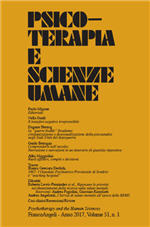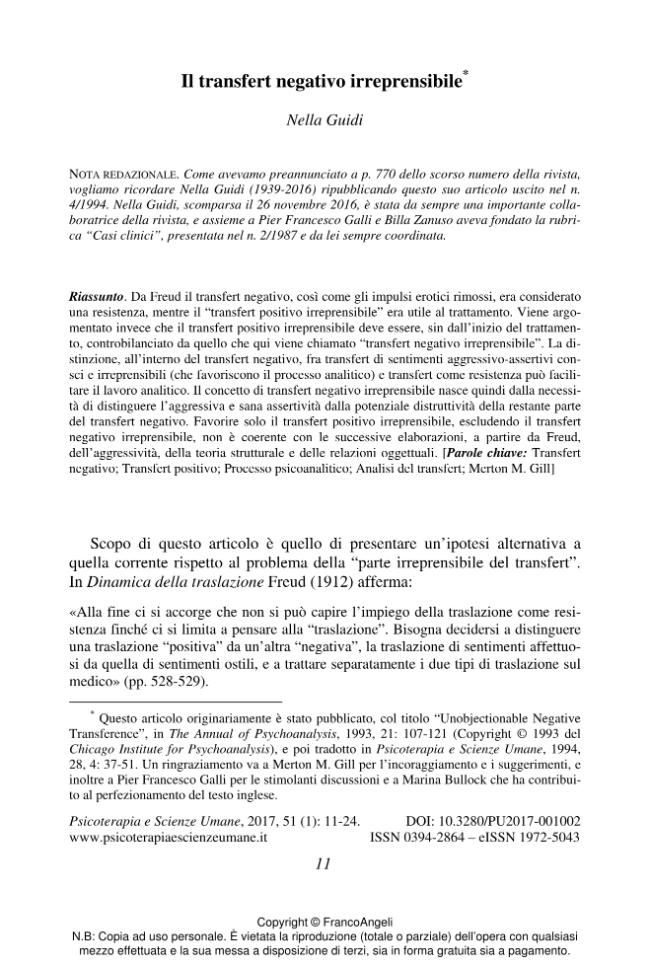Il transfert negativo irreprensibile
11-24 p.
Da Freud il transfert negativo, così come gli impulsi erotici rimossi, era considerato una resistenza, mentre il "transfert positivo irreprensibile" era utile al trattamento. Viene argomentato invece che il transfert positivo irreprensibile deve essere, sin dall'inizio del trattamento, controbilanciato da quello che qui viene chiamato "transfert negativo irreprensibile". La distinzione, all'interno del transfert negativo, fra transfert di sentimenti aggressivo-assertivi consci e irreprensibili (che favoriscono il processo analitico) e transfert come resistenza può facilitare il lavoro analitico.
Il concetto di transfert negativo irreprensibile nasce quindi dalla necessità di distinguere l'aggressiva e sana assertività dalla potenziale distruttività della restante parte del transfert negativo. Favorire solo il transfert positivo irreprensibile, escludendo il transfert negativo irreprensibile, non è coerente con le successive elaborazioni, a partire da Freud, dell'aggressività, della teoria strutturale e delle relazioni oggettuali. [Testo dell'editore].
Freud in The Dynamics of Transference (1912) states that negative transference, like positive transference of repressed erotic impulses, has to be seen as a resistance. It is not so for the unobjectionable positive transference, which he insists is the vehicle of treatment. It is argued, instead, that the unobjectionable positive transference must be counterbalanced from the very beginning of analysis by the "unobjectionable negative transference". The distinction, within the negative transference, between unobjectionable transference of conscious aggressive and assertive feelings (that facilitate the psychoanalytic process) and negative transference as resistance may help to induce the patient to better perform psychical work.
The concept of unobjectionable negative transference is useful because it helps to distinguish aggressiveness or assertiveness in the transference from the potential destructiveness of the remaining part of negative transference. The use of only unobjectionable positive transference, excluding unobjectionable negative transference, is not consistent with the elaboration, beginning with Freud himself, of the vicissitudes of aggression, structural theory, and object relations. (This article by Nella Guidi first appeared in English in The Annual of Psychoanalysis, 1993, 21: 107-121, and in Italian in Psicoterapia e Scienze Umane, 1994, 28, 4: 37-51) [Publisher's text].
Is part of
Psicoterapia e scienze umane : LI, 1, 2017-
Articles from the same issue (available individually)
-
Information
ISSN: 1972-5043
KEYWORDS
- Transfert negativo, Transfert positivo, Processo psicoanalitico, Analisi del transfert, Merton M. Gill
- Negative transference, Positive transference, Psychoanalytic process, Analysis of transference, Merton M. Gill



